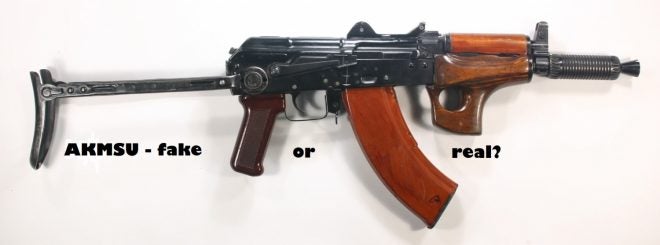Every field has its own mysteries and mystifications. And if we are talking about the history of Soviet small arms, the biggest puzzle is the notorious AKMSU. If you look it up on Russian gun websites, you can find a lot of fascinating information, for example:
The AKMSU or AKSMU is a compact carbine version of the Soviet AKM assault rifle in 7.62 caliber. AKMSU stands for Assault rifle (‘Avtomat’ in Russian) by Kalashnikov, Modified, Skladivaushiisya (folding-stock), Ukorochenniy (Shortened). The AKMSU assault rifle was developed in 1959 and is based on AKMS, and was intended for special units of airborne troops.
(…)
In the army ranks, they called it “fly swatter” for his uselessness, this lightweight rifle used a fairly powerful cartridge 7.62×39 mm, which led to a significant increase in the recoil, which made recoil control impossible even on short bursts.
(…)
Effective shooting could only be achieved in semi-automatic mode, which negates the combat effectiveness of this rifle.”
If you know Russian, you can read this “detailed” article here: https://soldat.pro/2017/10/16/avtomat-akmsu/ If you cannot read it – it is, in fact, a very convincing text. Everything is logical, there are a lot of emotions, the story of the “fly swatter” is very memorable.
 Picture provided by Miles Vining: https://www.thefirearmblog.com/blog/author/v-kenneth/
Picture provided by Miles Vining: https://www.thefirearmblog.com/blog/author/v-kenneth/
But if you think about it a little, there are two problems with this text. First of all, AKMS was accepted for service only in 1962, therefore it was rather difficult to create an assault rifle “based on AKMS” in 1959.
And the whole story about the “fly swatter” is just a fantasy of the authors: Serbia and Bulgaria have successfully produced similar short-barreled rifles chambered in 7.62×39 (SAM7SFK, M92 and infamous “Drako” on the US market). I shot them a lot and never had any problems with recoil management.
When I worked in Afghanistan, Serbian short-barreled M92s were pretty much the best AKs you could find en masse, because they were the only new AK, available in the country. Everything else was at least 40 years old and severely rundown.
 Serbian short-barreled M92, photo from author’s personal archive
Serbian short-barreled M92, photo from author’s personal archive
AKMSU is also mentioned in a classic Russian book “The History of Russian Assault Rifle“ by Sergei Monetchikov: In the same year (1975) one more short barreled variant of an AK, AKSMU, was developed, based on AKS74U(…) This project remained only as a prototype, because new caliber (5.45) was already chosen for the Soviet army.
Something just doesn’t add up. This weapon was developed either in 1959 or in 1975. It was called either AKSMU or AKMSU. It was based either on AKMS or AKS74U. But that is not my main concern.
No one in Russia have ever seen this weapon – not with active duty troops, not in a military warehouse, not even at the museum.
Military armorers never heard about AKMSU. No Russian arms factory has any documentation for this firearm, it is not mentioned as a prototype in any R&D project, when you ask seasoned weapon design engineers about it, they just shake their head and say “You are spending too much time on the internet, kiddo”. In other words, there is no proof that AKMSU ever existed.

(Picture: Konstantin Podgornov)
I am sure someone will just say “Well, it was classified, duh!”. There will also be others, who will say that they served with this weapon in the eminent Secret Squirrel Regiment, but when you try to get some additional information, they will tell you that there are no pictures available, this weapon also is not listed in their military record and their service was so secret that they can’t provide a Russian equivalent of DD 214.
Actually, there is no reason any information about this weapon should be classified. Supposedly, it was developed for the Soviet airborne troops (VDV), and other weapons developed for this branch of Russian military were never classified. Even if it was developed for special forces and used to be somehow classified, all the information would definitely be declassified by now.
As an example, take a look at the two really unique weapon systems, developed for Soviet specnaz: 6C1 “Tishina” (mean “Silence”) and 6C1 “Kanareika” (means “Canary bird”).

(Picture: Konstantin Podgornov)
This weapon system includes supressed underbarrel grenage launcher(!) GSN-19 (6Сh12), two suppressors, PBS-1 and PBS-4, subsonic ammunition in two calibers, additional rear sights and some other stuff.
THAT was classified. But now all the information is available, and you can see those weapons in many museums, at “open days” in various military units and there are plenty of pictures of this weapon system “in action”.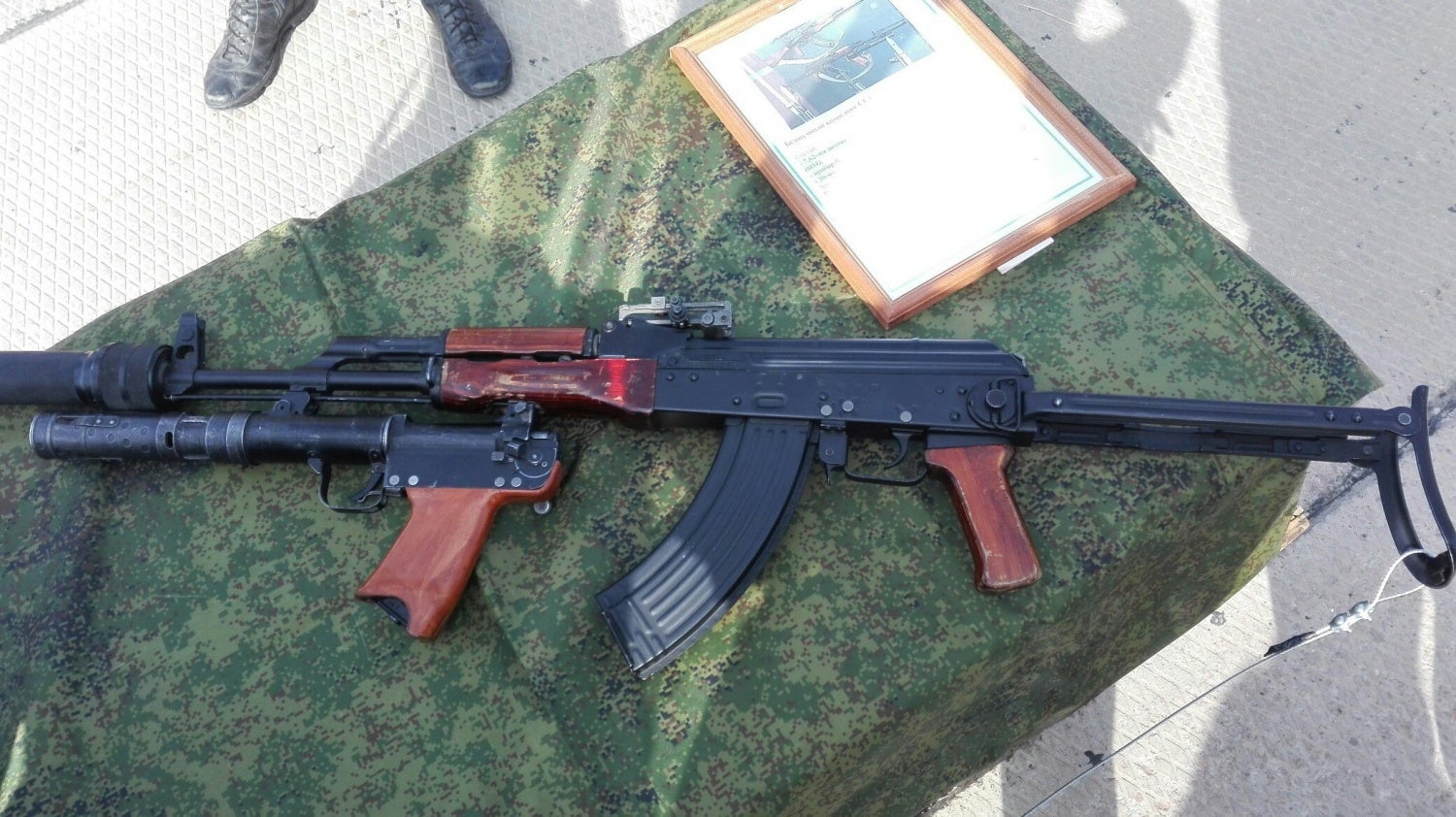
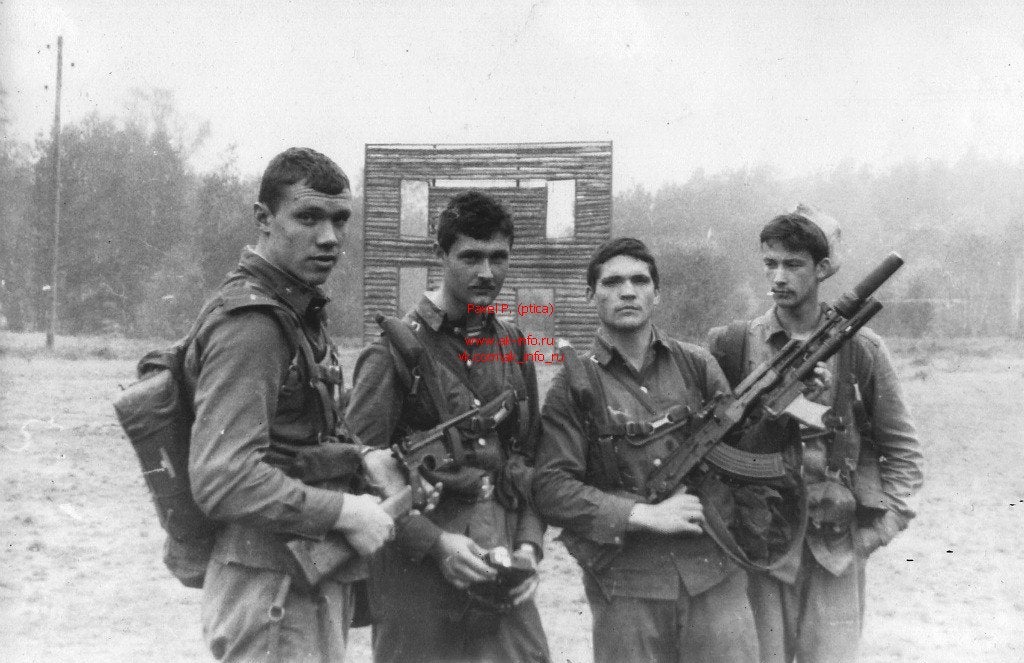
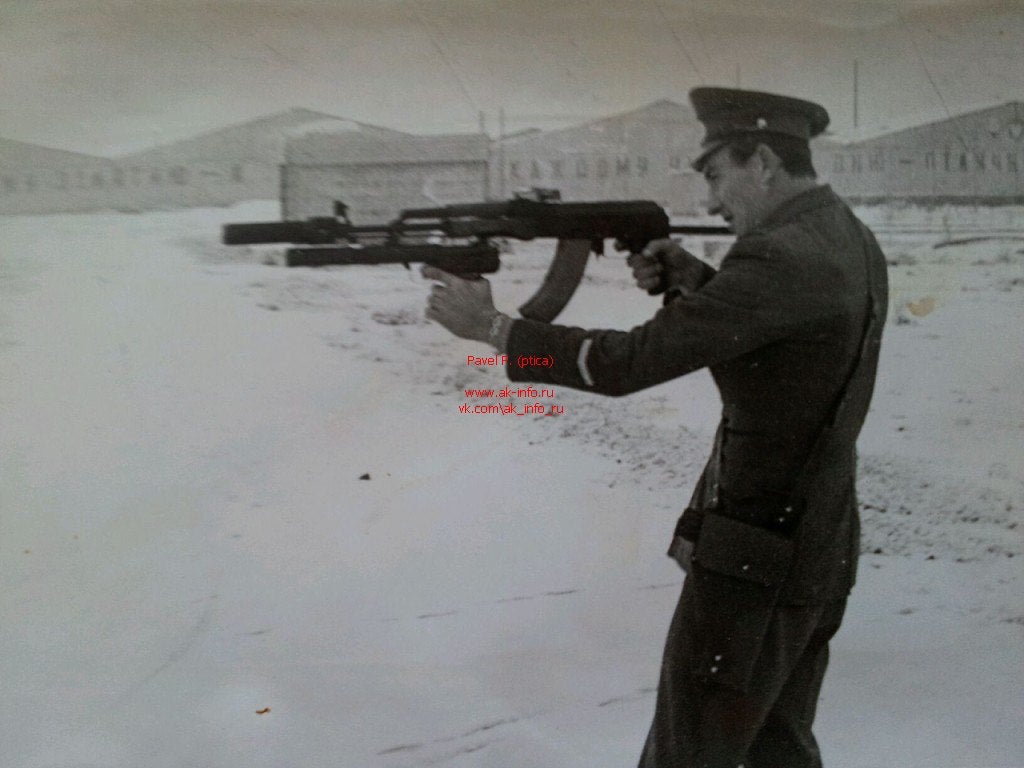 Pictures are provided by Pavel Pticin, http://www.ak-info.ru/
Pictures are provided by Pavel Pticin, http://www.ak-info.ru/
Why can’t we find any kind of similar information about AKMSU?
They say that the devil is in the details. In this case – in the rivets. If we look at the only availible specimen of AKMSU, it has two rivets in the back of the rear trunnion, unlike Soviet AKM, that has only one. Also, the receiver itself is angle cut and not straight like a Russian one. And take a look at the rivets on the trigger guard, AKMSU on the picture has one, while Soviet AKMSU has two.
AKMSU:

 Pictures are provided by Robert Stottman https://www.facebook.com/AK47catalog/
Pictures are provided by Robert Stottman https://www.facebook.com/AK47catalog/
Russian AKMS:
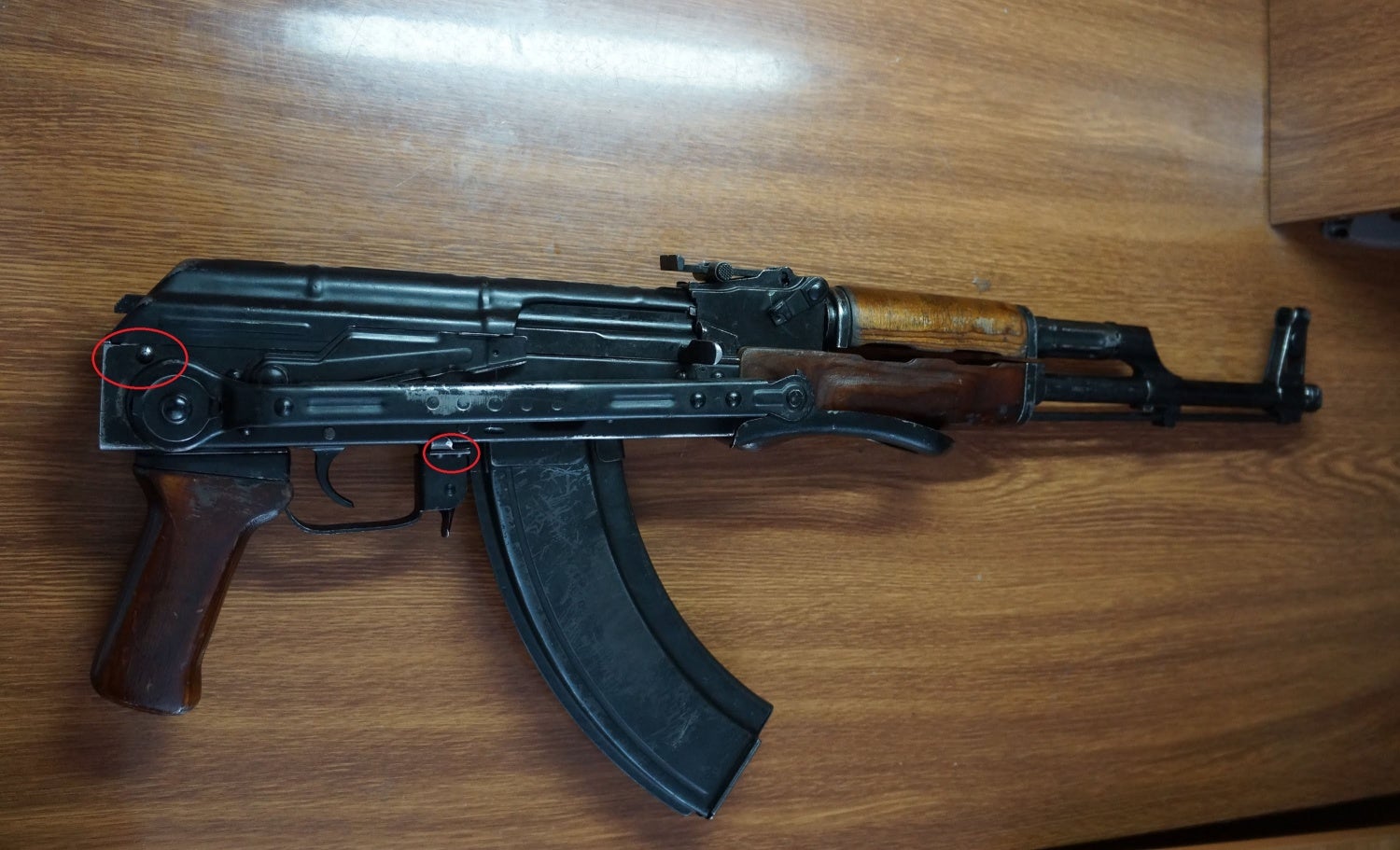 Source: https://www.youtube.com/watch?v=1TpGR8Yze50
Source: https://www.youtube.com/watch?v=1TpGR8Yze50
You don’t have to be an expert to see the obvious. This “secret Russian assault rifle” is evidently built on a Chinese receiver.
 Source: https://www.youtube.com/watch?v=7kZSet7nyq8
Source: https://www.youtube.com/watch?v=7kZSet7nyq8
Who makes odd looking guns from mismatched spare parts? If you ever red one of my previous articles: Worst AK Variants – Pakistan and Afghanistan or watched awesome TFBTV videos about this region, you already know the answer – gunsmiths of Darra Adam Khel from Khyber Pakhtunkhwa province of Pakistan. If we look closer at some of the parts, it becomes evident that rifle is largely handmade, selector markings are not original and internal parts have mismatching numbers on them.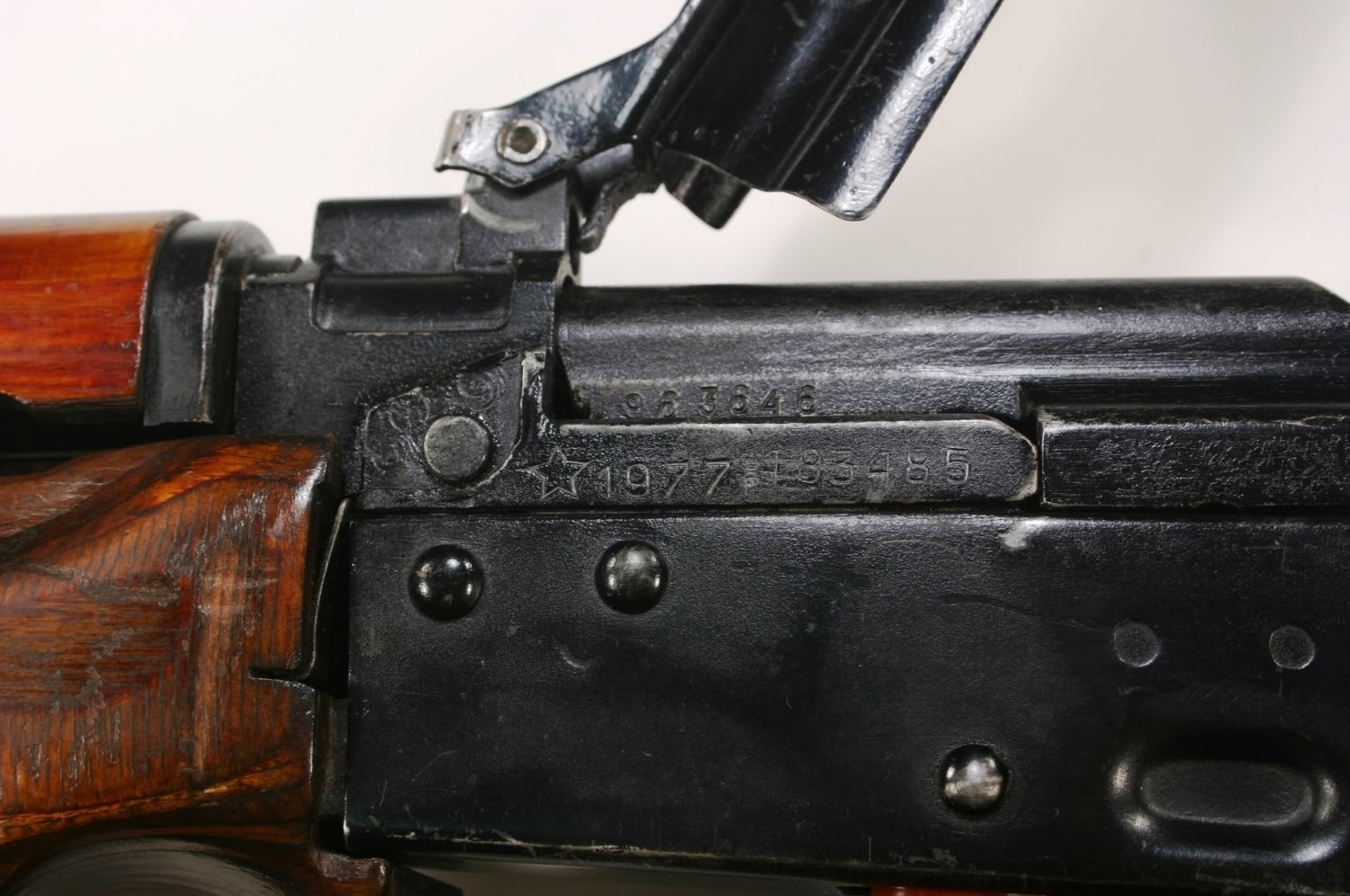 Pictures are provided by Robert Stottman https://www.facebook.com/AK47catalog
Pictures are provided by Robert Stottman https://www.facebook.com/AK47catalog
Ok, so where the legend about AKMSU comes from?
Let’s look at the available pictures. All of them are coming from the same source – the Royal Armory in Leeds, UK. I found AKMSU at the Royal armories website https://collections.royalarmouries.org/object/rac-object-275685.html
According to it, AKMSU was “gifted with the Pattern Room by the Ministry of Defence, August 2005”.
 Pictures are provided by Robert Stottman https://www.facebook.com/AK47catalog/
Pictures are provided by Robert Stottman https://www.facebook.com/AK47catalog/
Everything is falling into place. Seems like, during operation “Enduring Freedom” that started in 2001, some British troops captured an odd AK, brought it back through official channels and eventually it was transferred to National Firearms Centre in Leeds. Right?
And then I remembered one little green Russian book which I had when I was 8. At that time, I had pretty much every gun magazine and every weapon encyclopedia I could get my hands on, but that one was my favorite.
We even had a little game with my cousin – he would show me the a picture of the gun in this book and cover its name with his thumb. I had to guess the name and the country of origin and I was always right. Yes, kids, that how we entertained ourselves before the internet.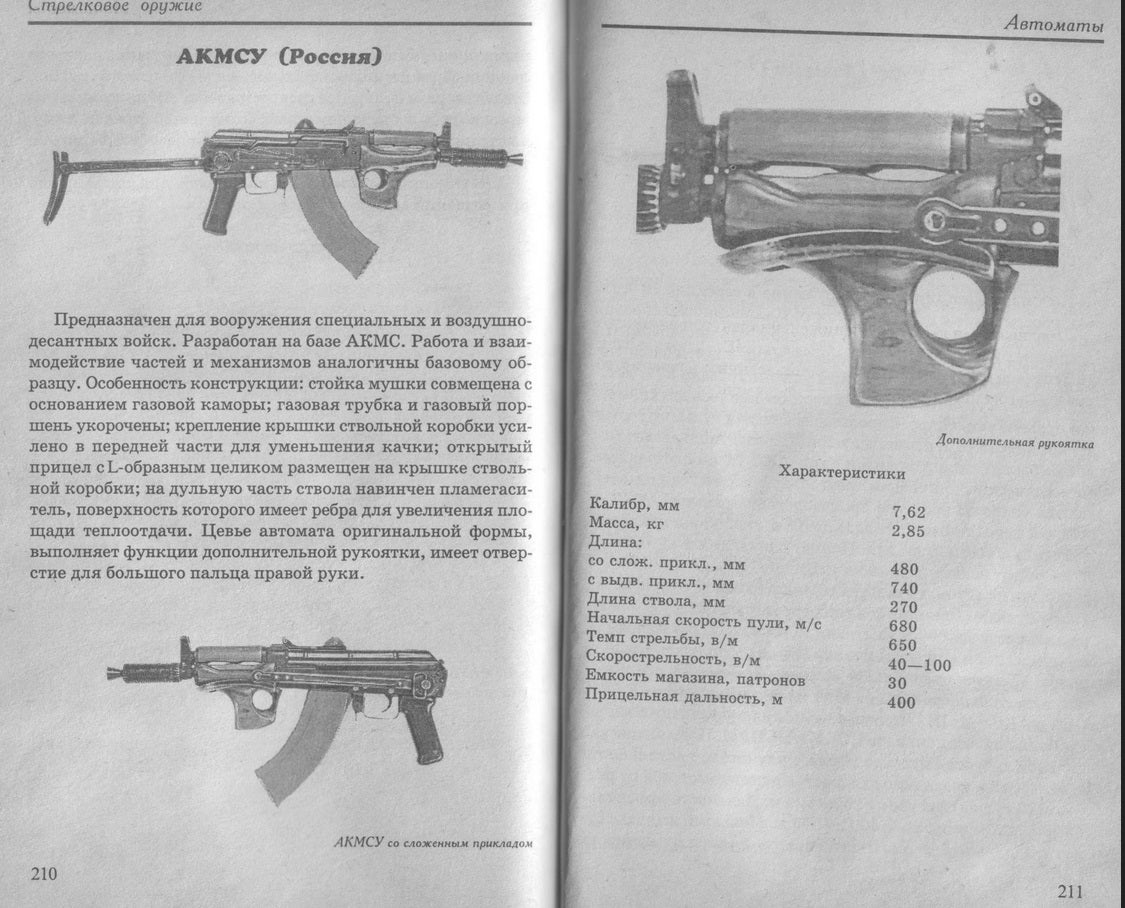 The page featuring AKMSU from my favorite childhood book
The page featuring AKMSU from my favorite childhood book
But I was 8 years old in 1997, and AKMSU was received by Royal Armories in 2005. Someone published information about this weapon in Russia 8 years before weapon appeared in Leeds. All of my assumptions must be wrong, seems like AKMSU is a real weapon after all, otherwise why it would be in Russian books?
To learn more about how this particular weapon ended up in the UK, I contacted Richard Jones who, back in the day, was the last Custodian of the MoD Pattern Room. When we first met about four years ago, he was Editor of Jane’s Infantry Weapons, when contacted his reply was:-
The AKMSU has always received a lot of media coverage, as I suspect it is the only known example that is accessible? It was received into the Pattern Room collection in June 1986, a decade or more before I became Custodian, it has however, remained an enigma with its apparent Chinese Type 56 receiver, but equally other major components which do not appear from actual examination to be “Craft” produced, the assumption by some that it is a ‘Khyber Pass special is based on it being the only known example and an apparent lack, as yet, of any official confirmation from the Soviet archives of the period, of it having seen service, which still leaves its provenance to be determined?
What I did not realise is that before 2005, this weapon simply was in a different collection selectively available to the public – UK MOD Pattern Room Collection, the latter collection being ‘gifted’ or transferred to the Royal Armouries in September 2005 on closure of the Nottingham site where the Pattern Room collection had resided since its relocation on closure of the Royal Small Arms Factory at Enfield (RSAF Enfield) around 1989. Pictures are provided by Robert Stottman https://www.facebook.com/AK47catalog/
Pictures are provided by Robert Stottman https://www.facebook.com/AK47catalog/
Now, thank to Richard’s knowledge, the timeline was finally clear.
Sometime in the 80s, an unknown Pakistani gunsmith had a Chinese receiver, Russian front trunnion, AKMS folding stock, AKS-74U hinged receiver cover and some mad woodworking skills. And one day his internal monologue took an unexpected turn. Perhaps, he thought: “Am I a real gunsmith or just another Bubba – that is the question… Whether ’tis nobler to just continue building low quality copies of other guns, or make an effort and build something unique for a change and be remembered?”.
And he did build something unique and probably created the single most famous Pakistani AK that ever existed. He had to put a lot of work into the handguard, making it look like an original Russian piece. 
 Pictures are provided by Robert Stottman https://www.facebook.com/AK47catalog/
Pictures are provided by Robert Stottman https://www.facebook.com/AK47catalog/
A lot of effort went into unique muzzlebreak with countless notches and cooling fins.
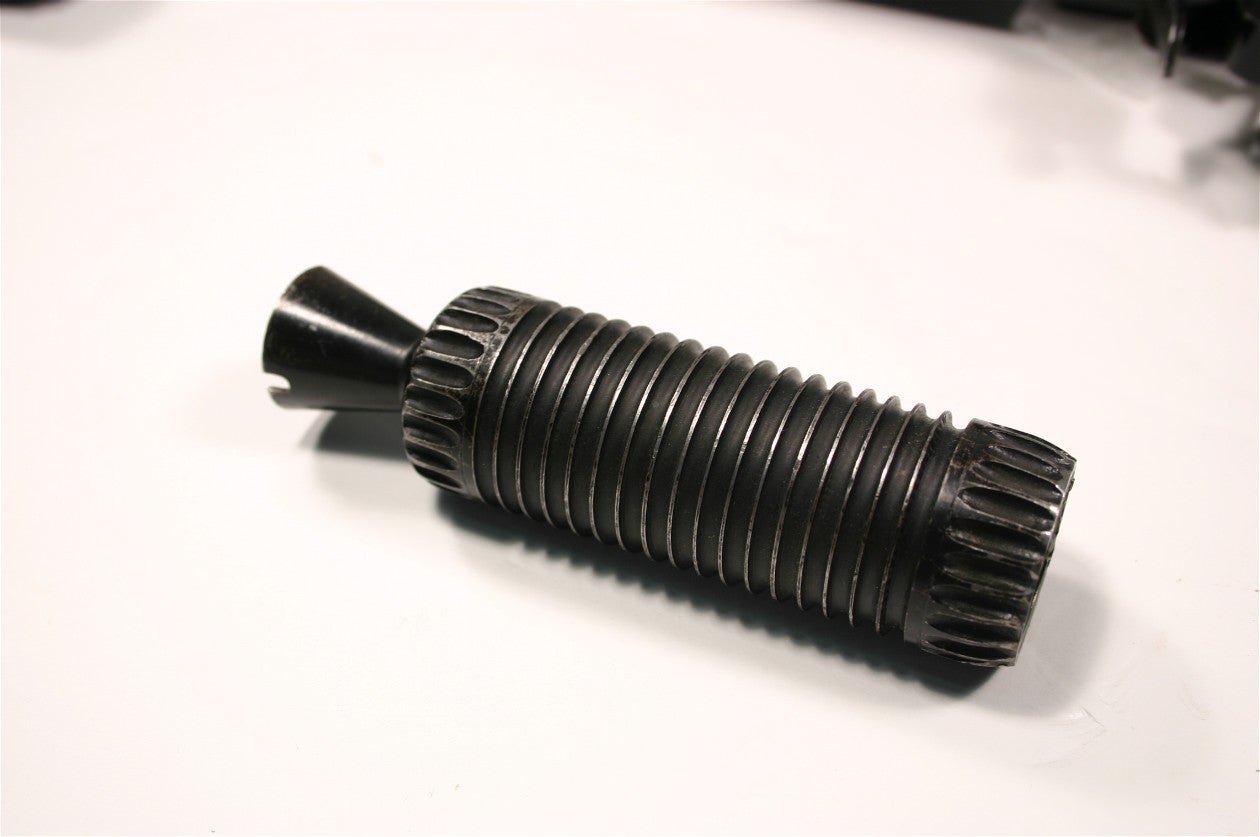 Pictures are provided by Robert Stottman https://www.facebook.com/AK47catalog/
Pictures are provided by Robert Stottman https://www.facebook.com/AK47catalog/
What happened after will probably remain a mystery forever, but what we know is that in June 1986 this weapon ended up in the UK. Somewhere about 1990-1991, Japanese author Masami Tokoi took some pictures of this weird weapon for his book “AK-47 & Kalashnikov Variation” and from there, pictures spread all around the world, including Russian publications.
 (Photo: M. Tokoi)
(Photo: M. Tokoi)
In a few years, Chinese and Japanese companies started to make airsoft replicas of “Secret Russian assault rifle”.
Then, American gunsmiths followed, building a few very good replicas of AKMSU, at least one of them being an impressive select fire variant.
Without any doubt, AKMSU is a very successful design, too bad we don’t know the name of a gunsmith who built it. But I am sure he would have a big smile on his face if he saw those Russian books listing his weapon as one of extremely rare original Soviet AKs.
And for those who are interested in small arms history, AKMSU will always be a perfect example of potential consequences of a sloppy and lazy historical research.
 Your Privacy Choices
Your Privacy Choices
